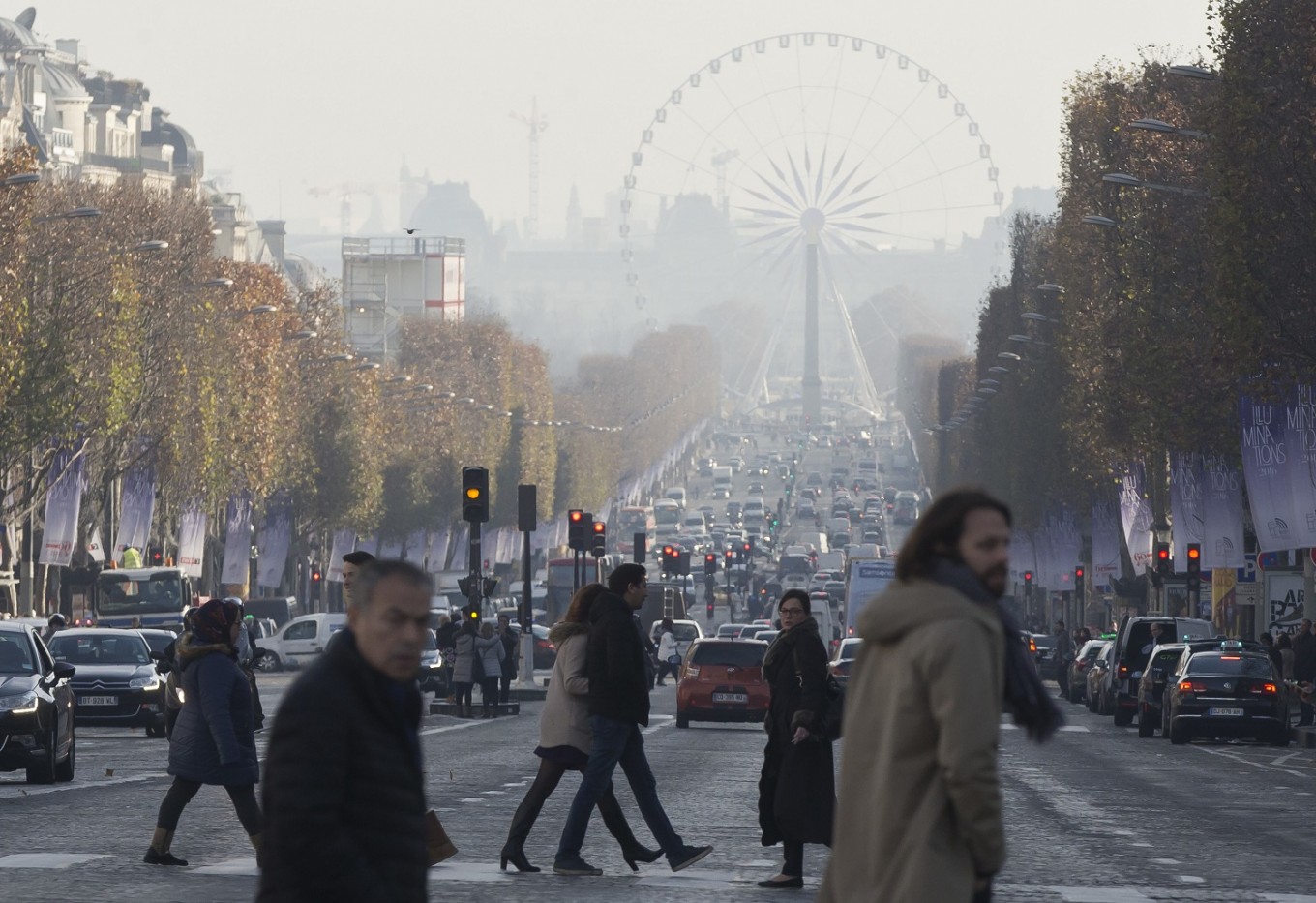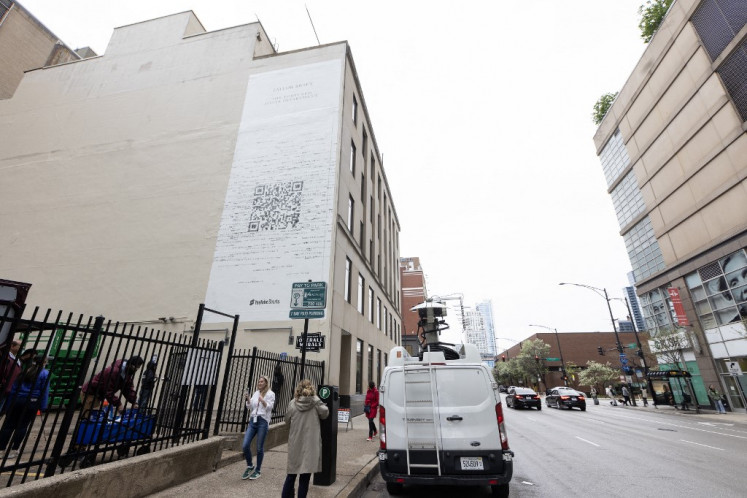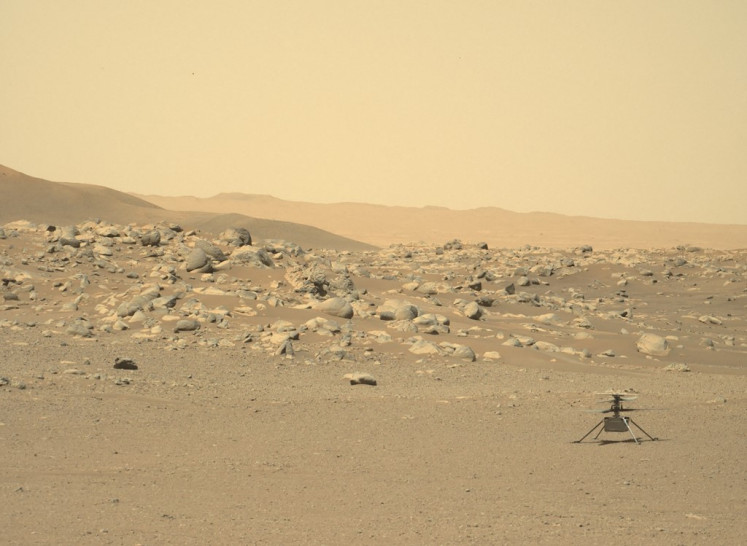Parisians grapple with worst winter pollution in a decade
Change Size
 People cross the Champs Elysees avenue as Paris suffers a pollution spike, Thursday, Dec. 8, 2016. Paris city hall has barred half of all cars from traveling and made public transportation free for a third consecutive day. The ferris wheel and the Louvre is seen in the smog in the background. (AP/Michel Euler)
People cross the Champs Elysees avenue as Paris suffers a pollution spike, Thursday, Dec. 8, 2016. Paris city hall has barred half of all cars from traveling and made public transportation free for a third consecutive day. The ferris wheel and the Louvre is seen in the smog in the background. (AP/Michel Euler)
U
nder deceptively blue skies, the marvels of Paris beckoned. But art dealer Sophie Vigourous wore a face mask to appreciate them because of the pollution.
The 38-year-old has lung cancer, putting her in the groups most at risk from the toxic, throat-tickling broth of tiny particles — far smaller than the width of a human hair — blanketing France's capital and other cities. It has prompted vehicle bans and other extraordinary but only moderately effective anti-pollution measures.
When viewed from the 210-meter (690-feet) tall Montparnasse Tower, Paris' tallest skyscraper, the city's worst episode of winter pollution in a decade was clearly visible, a brown haze punctured by the Eiffel Tower.
But from street level, the fog of lung-penetrating pollutants was less obvious, making the danger more insidious than the gritty, almost chewy, smog of notoriously unhealthy cities like Beijing.
Out on their morning jog, a group of heavy-breathing fire officers in shorts and T-shirts sucked in lungfuls, either oblivious or uncaring. Likewise, the jogger who bounded up the Champs-Elysees, a smug smile on her face.
Vigourous, however, knew better: hence the paper face mask.
"A nice day like this makes you want to go out for a walk and get some fresh air," she said. "You can't really feel it, the pollution."
But by the end of the day, "it stings," she noted.
(Read also: Pedestrians take over Champs-Elysees as Paris goes green)
Large red stains showing the pollution cloud have covered daily maps produced by Airparif since last week, broken up by a two-day window of cleaner air last weekend. The monitoring agency says a high-pressure weather system and a low-altitude blanket of warmer air over the city are acting like a saucepan lid, forcing Paris to breathe its own trapped emissions.
"An anti-cyclone with very little wind that prevents the dispersion of pollutants," Airparif spokeswoman Amelie Fritz explained.
The problematic pollutant this time is particulate matter — "very fine dust," mostly from vehicle emissions and wood-burning heating, Fritz said. Able to penetrate the lungs and bloodstream, the tiny PM10 particles can cause heart disease, lung cancer, asthma and acute respiratory infections, according to the World Health Organization.
The response from Paris authorities involves both carrot and stick. To encourage car users to switch to public transport, the Metro, suburban trains and buses have been free since Tuesday, at a cost, Paris region authorities say, of about 4 million euros ($4.3 million) per day. Paris' Velib bicycle-sharing service and Autolib electric cars are offering special deals.
On the punitive side, the Paris police chief has reduced speed limits, banned outdoor and indoor fires and even required homeowners to restrict their heating to no more than 18 C (64 F).
(Read also: Snow falls in November in Tokyo for first time in 54 years)
The headline measure, an alternating ban on cars, depending on whether they have odd or even-numbered plates, has been extended into Friday. Drivers face fines of between 22 ($23) and 75 euros ($80) for ignoring the rule. A similar scheme will be implemented Friday in the city of Lyon, as pollution hits various regions, including the Rhone valley.
But the Paris ban doesn't apply to small trucks, trucks delivering food and other essentials, to cars carrying at least three people and to certain professions. Undertakers and journalists, for example, aren't affected. The boulevards still hum with vehicles.
"We've noticed that the measures haven't been followed that much," said Fritz at Airparif. "We've noticed only 5 to 10 percent less traffic."
Among those who abided by the rule on Thursday were Marion Le Mouroux, her mother and sister. Leaving their diesel-burning Renault at home, they rode together to work in an Autolib. The electric cars weren't affected by the ban.
"It's worrying for our future," Marion Le Mouroux said after connecting the vehicle for a recharge. "If we are generating this much pollution, what's going to become of us."









